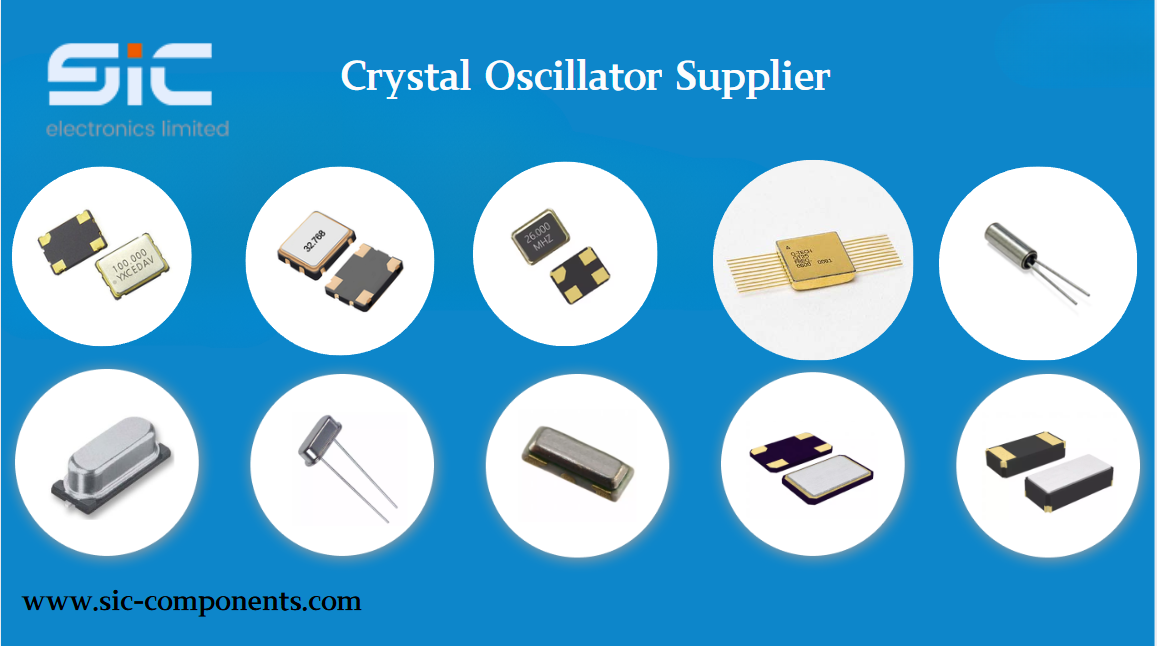In the realm of electronics, the role of crystal oscillators cannot be overstated. These devices are pivotal in generating precise and stable frequencies that serve as the backbone for countless applications, from simple timing functions to complex communication systems. As technology evolves, the demands on crystal oscillators continue to grow, particularly in the realm of high-frequency applications such as 5G communications and radar systems. This article delves into the advancements in crystal oscillator technology that are meeting these ever-increasing demands.

The Importance of Frequency Stability
Frequency stability is a crucial parameter for any oscillator, but it becomes even more vital in high-frequency applications. In 5G networks, for example, the allocation of frequency bands is tightly controlled, and deviations can lead to interference, reduced data throughput, and potential network failures. Similarly, radar systems rely on precise frequencies to detect and locate objects accurately. Therefore, advancements in crystal oscillator technology must focus on enhancing frequency stability, even in harsh environmental conditions.
Advancements in Material Science
One of the significant advancements in crystal oscillator technology is the development of new materials. Traditional quartz crystals have served well for decades, but they have limitations when it comes to high-frequency performance and temperature stability. To overcome these limitations, researchers have explored alternative materials such as lithium tantalate (LiTaO3) and lithium niobate (LiNbO3). These materials offer superior frequency stability and lower phase noise, making them ideal for high-frequency applications.
Moreover, advancements in the fabrication processes of these materials have led to the development of smaller and more robust crystal structures. This has enabled the creation of crystal oscillators with higher frequencies and better performance in compact packages, which is crucial for modern electronic devices.
Overcoming Temperature Effects
Temperature variations are a significant challenge for crystal oscillators. Changes in temperature can cause the frequency of the oscillator to drift, leading to inaccuracies in timing and communication systems. To mitigate these effects, advancements have been made in temperature compensation techniques.
Modern crystal oscillators incorporate complex temperature compensation circuits that continuously monitor and adjust the frequency to maintain stability across a wide range of temperatures. These circuits use a combination of analog and digital signal processing to achieve high precision and reliability. Additionally, the use of new materials with lower temperature coefficients of frequency (TCF) has further reduced the impact of temperature variations on oscillator performance.
Miniaturization and Integration
As electronic devices continue to shrink in size, the demand for miniaturized components, including crystal oscillators, has increased. Advances in microfabrication techniques have enabled the development of ultra-small crystal oscillators that maintain high performance despite their compact form factor.
Furthermore, the trend towards system-on-chip (SoC) integration has led to the development of integrated crystal oscillators. These devices integrate the crystal element and the oscillator circuitry onto a single silicon chip, reducing size, power consumption, and cost. While integrated oscillators may not match the performance of discrete crystal oscillators in all applications, they offer significant benefits in terms of miniaturization and integration.
Low Phase Noise and Jitter Performance
Phase noise and jitter are critical parameters that affect the performance of communication systems. High phase noise can degrade signal quality, leading to errors in data transmission. To meet the demands of high-frequency applications, advancements have been made in reducing phase noise and jitter in crystal oscillators.
Techniques such as oven-controlled crystal oscillators (OCXOs) and surface acoustic wave (SAW) resonators have been employed to achieve low phase noise. OCXOs use a heated oven to maintain a constant temperature around the crystal, reducing frequency drift and phase noise. SAW resonators, on the other hand, utilize acoustic waves on the surface of a piezoelectric material to generate high-frequency signals with low phase noise.
Conclusion
In conclusion, advancements in crystal oscillator technology are crucial for meeting the demands of high-frequency applications such as 5G communications and radar systems. These advancements include the development of new materials, improved temperature compensation techniques, miniaturization and integration, and reduced phase noise and jitter performance. As technology continues to evolve, we can expect even more innovations in crystal oscillator technology, driving the development of faster, more reliable, and more efficient electronic systems.
The future of crystal oscillator technology looks promising, with ongoing research and development focused on addressing the challenges of high-frequency applications. With these advancements, we can anticipate a new era of electronic devices that leverage the precision and stability of crystal oscillators to achieve unprecedented levels of performance.









 Wishlist (0 Items)
Wishlist (0 Items) 